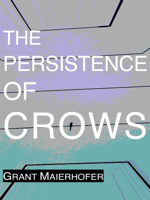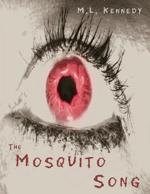JEFF IN VENICE, DEATH IN VARANASI
Geoff Dyer {lives here}
Pantheon Books, 2009
Geoff Dyer is the author of But Beautiful, which I read not too long ago. It was my first Dyer book, and I thought it a good introduction to his work. The book I’m writing about in this review marks my second time reading Geoff Dyer, and while I don’t think Jeff in Venice, Death in Varanasi will be his most satisfying book, I do find it extremely vivid. And I’m left with a yearning to visit the library again and find another of his books.
OK, Jeff in Venice, Death in Varanasi, where to begin? It’s called a novel. It’s probably more accurate to say: a novel comprised of 2 novellas. Or some such rubbish. Look, Dyer has me talking British! Each novella has its own protagonist. Whether they are the same or not isn’t that interesting of a question, for it can be answered either way and won’t make a difference. Jeff in Venice is told in the third-person and centers around Jeff. Death in Varanasi is told in the first and centers around a nameless character whom I shall call Ganoona.
Both protagonists are males, freelancers, Londoners, gray-haired. Except Jeff dyes his hair and Ganoona lets it grow wildly before shaving it all off, every bit, including eyebrows, leaving only a pigtail in the back: to symbolize his mourning:
‘I am in mourning for myself,’ I said, reprising the old Chekhov joke. ‘My old self refuses to die. The new is struggling to be reborn. In this interregnum a great variety of morbid symptoms appear.’
But the thing both protagonists have in common, the thing that makes them the same: they share an intensity to live life on their own terms. They not only observe – they are more than observers – they are also participants. As they participate, they observe. As they observe, they participate. This rule gives them a verve for life. If it weren’t more commonly used to refer to the bodily organ, I’d call them livers. Without cynicism, without optimism, these livers of life.
Both take drugs. Marijuana, cocaine, MDMA, alcohol, bhang lassis. Both can pick up and leave wherever they are located on short notice. No roots, nothing attached. Mobile. Although Ganoona, toward the end, does refuse to leave Varanasi.
He has come to terms with the idea that here is everywhere and everywhere is here.
And there’s also their approach to sexuality, not as in preference but drive. Jeff is driven for sex, craves it even. He immerses himself in the center of Woman, plunging in with his tongue, his face, his self. Ganoona, on the other hand, can’t seem to recover his drive. After months in Varanasi it has quite simply gone away, faded into a shadow of what it was in his younger years. He’s like St. Augustine, except snuffing this particular strain of lust came easily for him, almost unrequested, unsought.
But he does feel something still. A figment of the craving for the center of Woman, who, in Death in Varanasi, comes in the shape and size of Isobel, the granola beauty from Switzerland with her dreads and yellow T-shirt. Ganoona does feel impelled to talk it up with Isobel. He strolls along the ghats with her, the Ganges to their right, and he tries to make things happen, but she’s leaving tomorrow to Agra with another man, who looks a lot like Andre Agassi in the crazy part of his career. All this time Ganoona had to make a move toward Isobel, and he waits until she’s leaving? He tries to masturbate but doesn’t have it in him. The desire. It’s not there. Dried up. More accurately, he has lost his urge for women, but he hasn’t lost his instinct.
A key episode in Death in Varanasi is when Ganoona sits across from an enlightened man. He thinks of this man as his friend even though they don’t know each other. He asks his friend if they can look at each other, not a staring contest, simply look into each others eyes without speaking. Ganoona ends up seeing his own reflection on the surface of his friend’s eyes. In this way, Ganoona is looking at what his friend actively sees. For me this scene is an echo of the final act in Miguel de Unamuno’s Niebla.
By the way, Ganoona is actually the nameless first-person narrator’s made up word. A neologism. It means, “all that which is not anything else. But it’s also that which is everything else.”
MY RATING = ![]()
![]()
![]()
![]()
![]()










